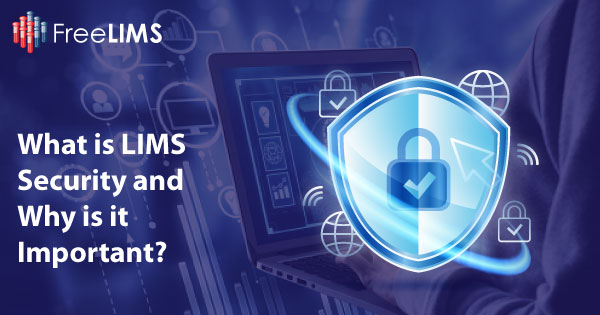A Laboratory Information Management System (LIMS) is a software used to manage laboratory operations and data, including sample tracking, test results, and laboratory inventory. The security measures put in place within a LIMS are critical to maintaining the integrity of the data being collected and analyzed. The repercussions of a security breach within a LIMS can be significant, ranging from legal liabilities to reputational damage. Therefore, laboratory managers must prioritize the security of their LIMS by implementing necessary access controls, authentication and authorization, encryption, backup and recovery, and by performing regular audits to ensure data protection.
Effective LIMS security helps prevent unauthorized access to sensitive data, maintain data integrity, and protect against security breaches and data loss. It also helps ensure compliance with regulations and standards, such as HIPAA, GLP, ISO 17025, ISO 15189, ISO 20387, and 21 CFR Part 11, depending on the industry. These regulations require the protection of electronic data and the ability to audit system access and changes.
What is Meant by Sensitive Data?
Sensitive data refers to information that has the potential to jeopardize the privacy and security of any person or organization involved in your daily activities. In order to ensure the protection of such data, it is crucial to maintain security of your LIMS. There are four key types of sensitive data that must be safeguarded:
- Protected Health Information (PHI): This encompasses individually identifiable health information.
- Personally Identifiable Information (PII): This includes any data that can be utilized to identify an individual, such as their name, address, or financial accounts.
- Commercial information: This entails business-related data such as contracts and agreements with suppliers, partners, and customers.
- Clinical trial and study data: This refers to the information collected during research studies involving human subjects, with the aim of testing the safety, efficacy, and effectiveness of new drugs, treatments, or medical devices. This data typically includes information on the participants, such as their age, gender, medical history, and other relevant health-related factors.
In addition to participant information, clinical trial and study data may also include laboratory test results, imaging data, and other measurements taken during the study.
Why is LIMS Security Critical for Your Laboratory?
LIMS security is critical for your laboratory for several reasons:
- Protecting Sensitive Data: Laboratories deal with a lot of sensitive data, including patient information, test results, and research findings. LIMS security ensures that this data is kept confidential and only accessible by authorized personnel.
- Compliance with Regulations: Many laboratories are required to comply with industry-specific regulations, such as HIPAA for healthcare laboratories or GLP (Good Laboratory Practice) for research laboratories. LIMS security helps ensure that laboratories are meeting these requirements and avoiding potential penalties for non-compliance.
- Preventing Data Breaches: Data breaches can have severe consequences, including financial loss, damage to reputation, and legal consequences. LIMS security measures can help prevent unauthorized access to laboratory data, reducing the risk of a data breach.
- Ensuring Data Integrity: LIMS security can help ensure that laboratory data is accurate and reliable. This is especially important for research laboratories, where data integrity is critical to ensure the validity of scientific findings.
How Does a LIMS Ensure Security?
A LIMS ensures security through a variety of measures such as:
- User Access Control: A LIMS restricts access to the system and data to authorized users only. User accounts can be created with unique usernames and strong passwords, and user roles and permissions can be defined based on job responsibilities.
- Authentication And Authorization: A LIMS has strong authentication mechanisms to ensure that only authorized users can access the system. Additionally, the system can enforce role-based access control (RBAC) to ensure that users only have access to data that is relevant to their job function.
- Data Encryption: A LIMS encrypts sensitive data at rest and in transit. This ensures that if the data is intercepted, it cannot be read without the appropriate decryption key.
- Data Backup and Recovery: A LIMS regularly takes data backups to ensure that data is not lost in the event of a system failure or data corruption. Additionally, a LIMS system has a disaster recovery plan in place to ensure that data can be restored in a timely manner.
- Audit Trails and Logging: A LIMS maintains an audit trail to track all changes made to the system, who made them, and when. This helps identify potential security breaches or system misuse.
- Physical Security: LIMS servers are usually located in a secure location with restricted access. Access to the servers can be monitored and controlled, and physical security measures such as surveillance cameras and access control systems can be implemented.
- Regular System Updates: A LIMS is regularly updated with security patches and software updates to address vulnerabilities and ensure that the system is up-to-date with the latest security best practices.
- Employee Training: LIMS security can be improved by providing employees with regular training and education on security best practices, such as strong password management, phishing awareness, and safe data handling.
Overall, LIMS software ensures security through a combination of technical and administrative measures. By implementing a LIMS, laboratories can protect their data against unauthorized access, theft, and loss.
Conclusion
In summary, LIMS security is critical for your laboratory to protect sensitive data, comply with regulations, prevent data breaches, and ensure data integrity. Security measures such as user access control, authentication and authorization, data encryption, data backup and recovery, audit trails, physical security, and regular system updates can help ensure data protection and compliance with industry regulations. By implementing a secure LIMS, laboratories can minimize risks and improve overall data management practices.


